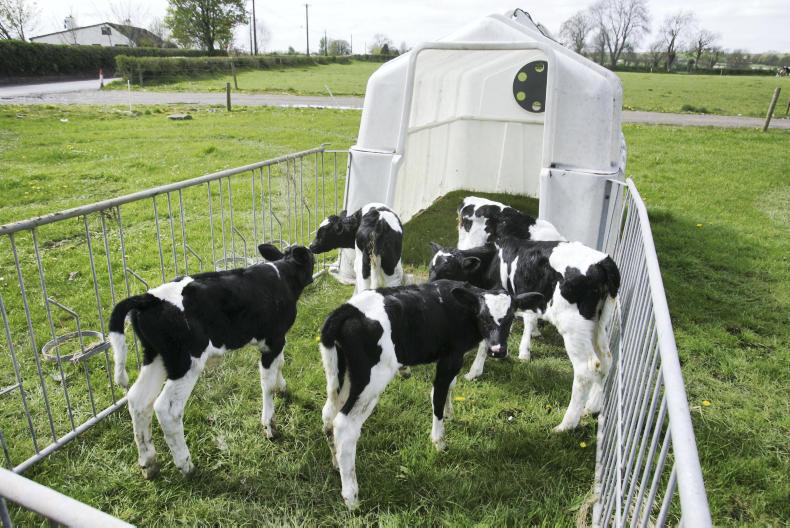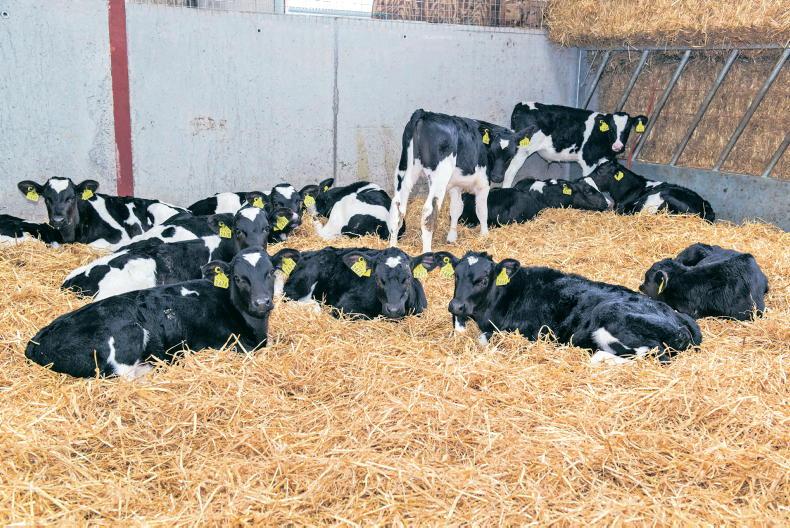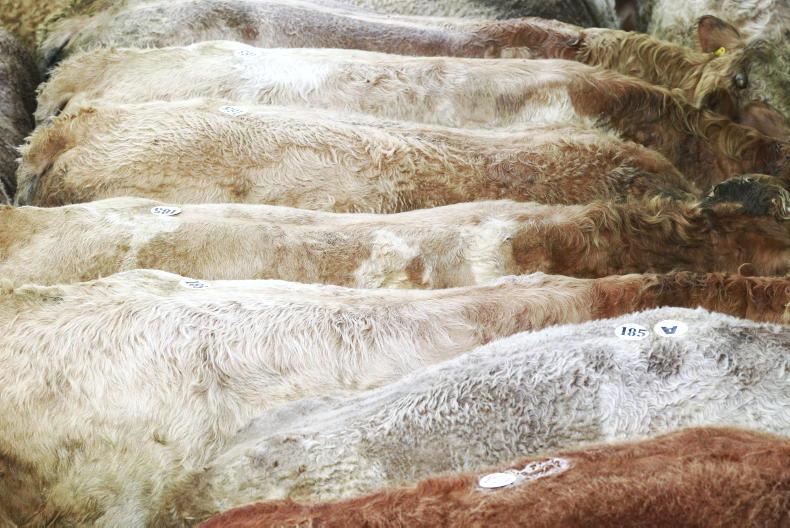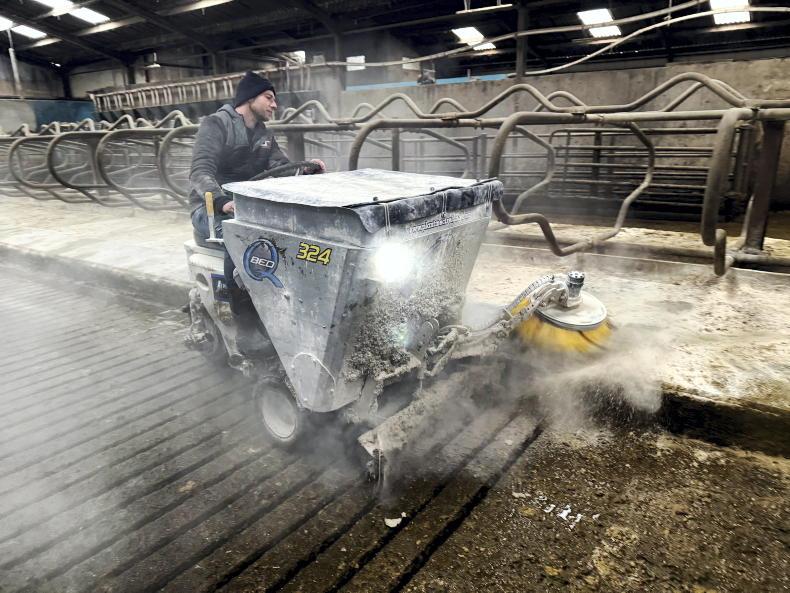With major investment needed in calf housing facilities, many farmers are looking towards group calf hutches to supply overflow accommodation for their expanding herd as a short-term solution.
First and foremost, the best accommodation for calves is a purpose-built shed which provides good airflow without draughts, while protecting from high levels of rainfall, but hutches can provide a cheaper alternative, in the right setup.
The conditions in this country mean that calf hutches are not as suitable as they may be in a more temperate climate, due to the high levels of rainfall and stormy conditions that can occur.
Location
The hutch must be situated to provide protection from the elements while still ensuring good movement of air.
It is not as simple as purchasing one and putting it in a corner of the yard that is empty.
The prevailing wind will come from the southwest for the majority of the time but for some parts of the country the east wind can also pose a massive problem so this has to also be taken into account. The buildings around the hutch can also have an influence on air movement.
The one major drawback of calf hutches is when it comes to bedding and cleaning
Calves standing outside the hutch are much more exposed to wind chill, which will only be compounded if they get wet, while feeding for example.
Drainage is also a major concern as the hutch must be placed on a solid site, preferably on a concrete base with drainage channels in place.
The one major drawback of calf hutches is when it comes to bedding and cleaning.
While the initial investment may be seen as cheap compared to a shed the time involved with bedding and cleaning out of hutches, especially during the busiest period of the year, makes them very labour-intensive.
It also means that they do not get cleaned out as much as they should be in a lot of cases.
Calves in hutches will often have stale water left in front of them for days as they will have to be individually filled
We saw last spring with the heavy falls of snow that many sheds came under pressure but calf hutches were particularly exposed to the elements.
During periods of cold weather, it is recommended to increase feeding levels while a clean dry bed is also important.
This can be difficult to achieve if drainage is not well designed and is one of the main weaknesses of the system.
Another area is with fresh water. Calves in hutches will often have stale water left in front of them for days as they will have to be individually filled.
This does not encourage intakes and fresh water should be provided daily.
There are advantages with such a housing system with calves able to choose their preferred environment and the hutches themselves are made from materials that are easy to disinfect. However, the one area where they will inevitably fail is if they are overstocked.
Group hutches for seven calves could cost approximately €1,300, or €185/calf, while a purpose-built shed for calves could cost anywhere from €350/calf and up, depending on the design.
Labour has to be taken into account, so too does the additional equipment that is needed for feeding calves in hutches, such as a milk trolley.
A base for the calf hutches is not included in this cost either.
Hutches do have some advantages such as a lower risk of common calf infections but again it is dependent on the individual setup.
They also help to prevent pathogens from spreading between the hutches which can have benefits for animal health.









SHARING OPTIONS